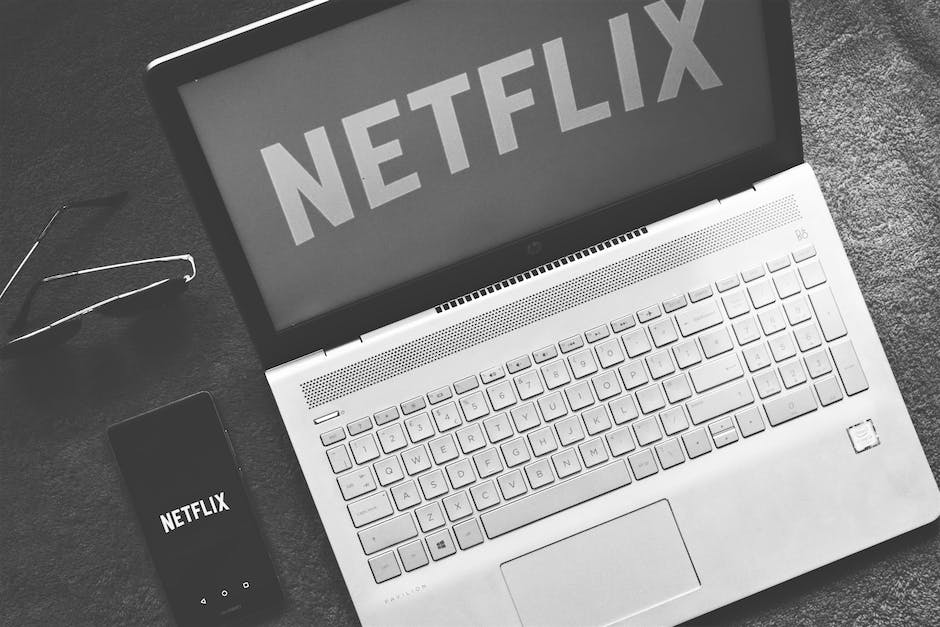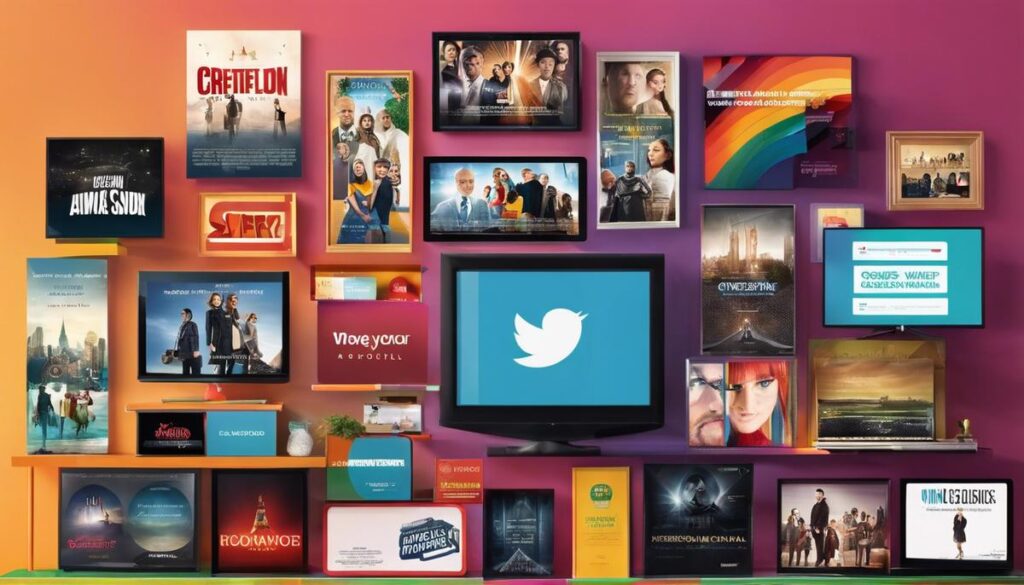The landscape of entertainment has been irrevocably altered by the advent of streaming services, with Netflix at the forefront of this digital revolution. As a catalyst in redefining the way we consume visual content, Netflix has seamlessly integrated cutting-edge technology to curate a unique and personalized experience for its global audience. From leveraging machine learning for unparalleled content personalization to investing in original content creation, the platform has not only met the ever-evolving demand for on-demand entertainment but has consistently set new industry standards. This essay will navigate through the intricate technological innovations that Netflix employs to maintain its stronghold as an entertainment powerhouse, while offering a glimpse into how these advancements are not just shaping current viewer experiences but also laying the groundwork for the future of entertainment.
Content Personalization
Netflix Masters the Art of Content Personalization: Here’s How They Do It
In the ever-evolving universe of streaming services, Netflix remains a veritable giant, and its secret weapon is content personalization. This isn’t just a happy byproduct of tech magic; it’s a calculated, data-driven strategy that keeps the platform a leap ahead of competitors. How does Netflix keep viewers glued to their screens? Through a sophisticated algorithm that seems to read minds, ensuring that when you log in, you’re greeted with a buffet of shows and movies eerily aligned with your tastes.
The first piece of the puzzle lies in the trove of data Netflix collects. Every time you binge-watch a series or abort a movie after ten minutes, Netflix is watching. It meticulously records what, when, and how you watch, but that’s just the start. By analyzing this information with an advanced algorithm, they don’t just understand viewer preferences, they predict them.
Netflix’s recommendation engine is a marvel in today’s tech landscape. Rather than a one-size-fits-all approach, the algorithm generates a unique user profile for each subscriber. This isn’t your average “customers who watched this also watched” scenario. No, Netflix goes several layers deeper, considering factors like your viewing history, the time of day, and even the device you’re using to watch. All these data points feed into an analytical model that determines which shows and movies will appear on your homepage.
Thumbnails, that’s right, those little images you see of each show or movie, they’re personalized too. Depending on your viewing habits, Netflix might show you a different thumbnail for the same show someone else sees. It’s all about tapping into your subconscious, showing you an image that’s likely to make you click.
Beyond just keeping viewers engaged, content personalization allows Netflix to smartly manage its sprawling library. With thousands of titles, the chance of content getting lost in the shuffle is real. Personalization means that hidden gems tailored to specific user preferences can float to the surface, ensuring a wide variety of content gets its moment in the spotlight.
Netflix’s personalization extends to the production side as well. The company analyzes data to understand which genres are hot and which ones are not, which informs their content creation strategy. This data-focused approach to production has given us hits like “House of Cards” and “Stranger Things” — shows that might not have existed without the guiding hand of Big Data.
In conclusion, content personalization is not just an add-on for Netflix, it’s the core of their user experience. By harnessing the power of data and machine learning, Netflix keeps viewers in a constant state of contentment, making manual searches a thing of the past. As technology progresses, expect Netflix to up the ante, refining its recommendations to psychic levels of accuracy. No summaries needed; the proof is in your next Netflix marathon. How’s that for a personalized streaming utopia?

Original Content Creation
Harnessing Technology for Blockbuster Success: Netflix’s Mastery of Original Content
In a world where streaming services are as ubiquitous as morning coffee runs, it’s no secret that Netflix has become the household name for entertainment. But how exactly does Netflix continue to captivate audiences with its original content? The answer lies in their adept use of cutting-edge technology, which has become the magic wand for their content strategy.
Beyond personalized experiences—which have already been thoroughly dissected—Netflix wields technology to innovate in several vital areas. Crafting stories that resonate with viewers is no small feat, but Netflix’s deployment of sophisticated tools and methods has turned it into a calculable endeavor.
One such application is determining what content gets the green light. While gut feeling still plays a role in Hollywood, Netflix arms its decision-makers with data-packed insights. By analyzing viewership patterns, search habits, and even completion rates of shows and movies, they can predict what might be the next binge-worthy success. This information drives choices in everything from genre and casting to plot arcs.
Then there’s the domain of production technology. Netflix is not just a curator but also a creator, and technology influences how content is crafted. High-quality production is now more accessible than ever, thanks to advancements in cameras, sound equipment, and post-production software. By employing these state-of-the-art tools, Netflix’s original content boasts cinematic quality that can rival big-screen productions, but with the speed and agility that streaming media demands.
Marketing, too, does not escape the touch of technology. Netflix adapts to the fast-paced digital landscape with tools that optimize promotion. Social media buzz is gauged to tailor marketing campaigns, while A/B testing different trailers helps pinpoint what excites potential audiences. As a result, even before a show drops, Netflix has a good grasp on its potential reach and engagement.
Finally, let’s address scalability. As Netflix expands globally, technology enables this growth to be seamless. By leveraging cloud services and robust content distribution networks (CDNs), Netflix ensures that their original content is not only available worldwide but also streams smoothly, regardless of the surge in viewership.
In sum, technology is not just a part of Netflix’s content strategy — it’s the backbone. Technology fuels every step, from predictive analytics for green-lighting projects to cloud-driven global distribution. As Netflix continues to pioneer and shape the industry, keep an eye out for the next technological leap that will undeniably be at the center of their relentless pursuit to entertain the world.

Streaming Quality and Infrastructure
Title: Mastering the Art of Bufferless Binging: Netflix’s Global Streaming Success
When settling in for a Netflix binge-session, the expectation is clear: crisp visuals, clear audio, and absolutely no buffering. Behind the scenes, Netflix orchestrates a tech symphony to guarantee that millions around the world enjoy the movies and shows they love without the dreaded spinning wheel of delay. How is this achieved? The magic lies in two key innovations: cutting-edge cloud services and a robust content delivery network (CDN).
Netflix leans heavily on cloud computing to manage its colossal data needs. A cloud service is akin to a nearly infinite set of digital Legos, providing the required building blocks on-demand. This flexibility lets Netflix scale up during peak hours—think new season drops or hit movie premieres—and scale down when viewership wanes, all without a hitch. It’s a cost-effective, adaptive solution that handles the ebb and flow of millions of global requests.
But cloud computing is just one piece of the puzzle. Netflix’s streaming finesse also owes much to its deployment of a content delivery network. A CDN is a scattered network of servers that delivers content from the nearest node to the user. Think of it as a series of water distribution centers ensuring that every home gets a steady flow without having to rely on a central reservoir—the same concept applies here but with data. This localized delivery drastically reduces lag and buffers, ensuring that whether you’re watching in downtown Tokyo or rural Kansas, you’re getting a smooth, uninterrupted streaming experience.
Moreover, caching plays a crucial role in this process. Essentially, Netflix stores popular shows and films on various CDN nodes, forecasted by viewership trends and historical data. So, when you press play, you’re likely pulling the data from a server that’s geographically closer, rather than from half a world away, ensuring the fastest delivery speed possible.
Lastly, Netflix doesn’t let the ever-changing internet climate catch it off guard. With an eye on network conditions across the globe, Netflix tweaks its video encoding. This means adjusting the quality during slower connection speeds to prevent buffering without noticeably affecting picture quality. It’s a fine balance struck between aesthetic and function that upholds the streaming experience without compromise.
These technologies in combination reflect Netflix’s commitment to mastering the technology necessary for seamless global streaming. It’s not just about what you watch but how you watch it. Netflix clearly has this covered, letting viewers focus on what truly matters: diving into their favorite content uninterrupted.

Interactive and Immersive Content
Netflix’s innovative approach to storytelling is pushing the boundaries of traditional TV and cinema, thanks to interactive technology. With the introduction of interactive plots, viewers now wield the power to steer the story in the direction they choose. This groundbreaking move has transformed passive audiences into active participants, creating a personalized cinematic experience that resonates deeply with the modern desire for control and customization.
Interactive storytelling isn’t just a fad; it’s a sophisticated venture into blurring the lines between viewer and creator. Bandersnatch, part of the Black Mirror series, invites viewers to make decisions for the main character, leading to multiple endings. This is a game-changer. It transforms the simple action of watching into an engaging, choose-your-own-adventure ordeal, causing viewers to be more invested in the outcome because they’ve played a hand in shaping it.
The implications of interactive storytelling are vast. It’s not just about entertainment, it’s also about the technical prowess that enables these features. Real-time story rendering, branching path creation, and managing multiple concurrent streams are just the tip of the iceberg. These capabilities demand robust technology backbones which Netflix is continuously enhancing.
Netflix employs complex algorithms and backend systems to ensure that each choice a viewer makes is smoothly incorporated into the story, without disrupting the streaming quality. This seamless integration is essential for maintaining the illusion of control and preserving the immersive nature of the story. The use of cloud-based services ensures a consistent and high-quality viewing experience, regardless of a viewer’s location or device.
The content delivery network (CDN) is also integral to this interactive ecosystem. By caching content closer to where it’s requested, Netflix ensures that there’s minimal delay in the delivery of interactive choices. This reduces lag and buffering, translating to an uninterrupted storytelling experience. Viewers can make decisions without worrying about loading screens or pauses, thus maintaining the narrative flow.
Adaptive streaming also comes into play, with Netflix adjusting its video quality in real-time to match the viewer’s network conditions. This crucial feature prevents the frustration of buffering at a critical plot decision point, which could otherwise tarnish the immersive experience.
In conclusion, Netflix is not just redefining storytelling; it’s revolutionizing the way we consume media. By utilizing interactive technology, it addresses the viewers’ increasing desire for content that adapts to their choices and preferences. The future of storytelling is here, and it hinges on complex technical systems working flawlessly behind the scenes to deliver narratives that are truly in the hands of the beholder. As for what’s next? Expect even greater technological advancements from Netflix as they continue to lead the charge in interactive storytelling and viewer engagement.

Photo by molliesivaram on Unsplash
AI and the Future of Entertainment
The Evolution of Content Discovery on Streaming Services
Picture a world where choosing a movie or TV show to watch becomes as easy as thinking about what mood you’re in. AI is making that possible, and streaming services like Netflix are at the forefront of this revolution. With artificial intelligence, the next level of content discovery is upon us, refining the way viewers connect with stories and characters. Let’s unravel how AI will take discovering your next binge-worthy series to an exciting new level.
AI-Driven Discoverability: Beyond the Traditional
Forget scrolling through endless titles. AI is set to revolutionize content discovery by understanding viewer preferences on a granular level. It can process not only your viewing history but also take cues from behaviors – pausing, skipping, rewinding – to infer what keeps you glued to the screen. In the near future, AI could analyze voice tone or facial expressions to recommend content that matches your current mood. This emotionally intelligent AI could be a game-changer in providing a truly intuitive viewing experience.
Interactive Voice Control: The Remote Revolution
Voice-controlled assistants aren’t new, but their integration with streaming services has barely scratched the surface. AI advancements will see streaming services develop sophisticated voice command features, allowing viewers to interact with catalogues conversationally. “Suggest a movie for a rainy afternoon,” or “Find a comedy that’ll brighten up my day,” could yield personalized results faster than you can click through genres.
The Efficiency Edge: Streamlining Operations
Behind the scenes, AI does more than just recommend movies. It’s streamlining operations by automating repetitive tasks like organizing libraries, tagging content with metadata, and managing rights and licensing agreements. This not only saves time but also eliminates the potential for human error, ensuring a smooth, uninterrupted service.
Predictive Analytics: Crafting the Future of Content
Streaming giants are already using predictive analytics to know what we want before we do. But as AI gets smarter, its ability to forecast trends and viewer preferences will become more precise. Imagine a world where AI anticipates the next viral genre or directs production investments towards content that fills a gap you never knew existed. The result? A fresher, more diverse range of programming that hooks viewers from the get-go.
Security and the AI Shield
Stronger, smarter AI means more robust defenses against piracy and unauthorized access – safeguarding content and ensuring creators get their dues. By constantly learning and adapting to new threats, AI security measures will become more formidable, keeping your binge-watching safe and sound.
Conclusion
Cutting-edge AI technology won’t just shape the future of streaming services like Netflix; it will completely rebuild it. With more personalized recommendations, innovative content discovery methods, streamlined operations, and robust security – the scene is set for an enriched, secure, and tailor-made viewing experience. Embrace the change; AI is about to make watching your favorite shows and movies more exciting than ever before.

As we have traversed the multifaceted terrain of Netflix’s technological innovations, it becomes evident that the confluence of AI, data analytics, and cloud infrastructure is not just propelling the platform to new heights but is also fundamentally transforming the entertainment landscape. By embracing the potential of interactive content, investing in the fidelity of streaming quality, and continually pushing the boundaries of AI in creative processes, Netflix is crafting an ecosystem where personalized and immersive experiences are not just goals but realities. The future beckons with promises of advancements that will further blur the lines between creators, curators, and consumers, with Netflix’s commitment to technological evolution positioning it as a harbinger of this transformative era in digital storytelling and entertainment.

